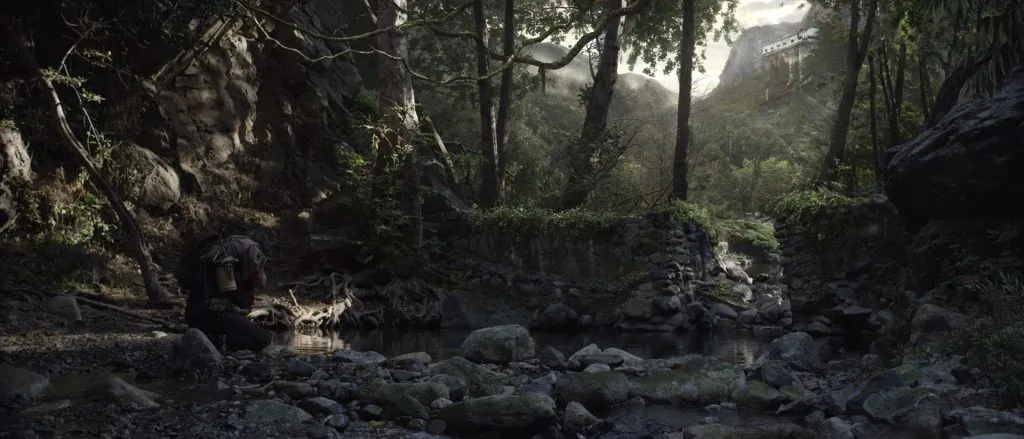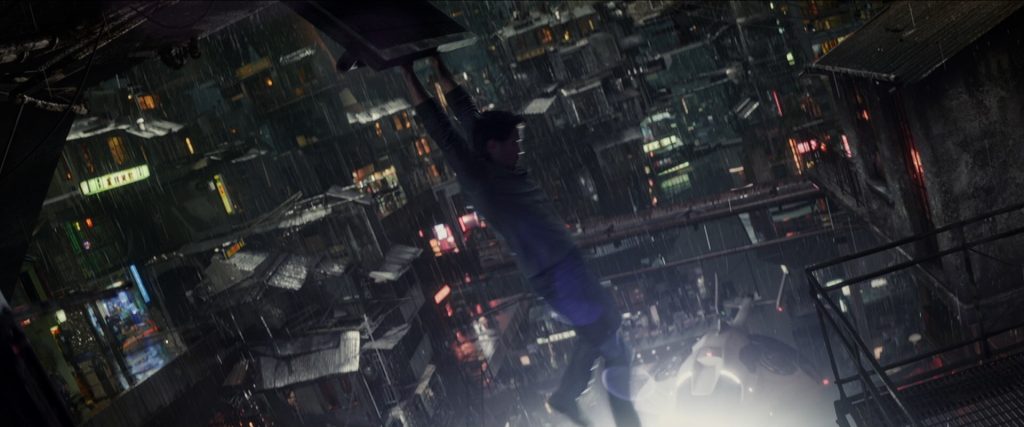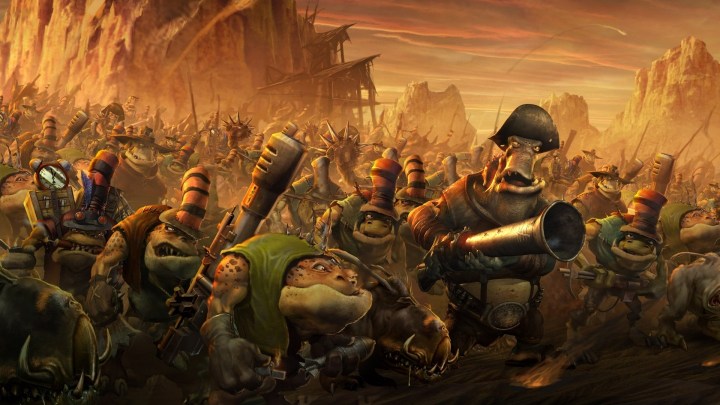Everything You Need to Know to Become a Matte Painter
In films, Matte Painters are the creative and talented people behind making incredible photo-realistic landscapes or interior and exterior environments that you just can’t get on a real set.
When it comes to Matte Painting, Saby Menyhei is a superstar in the entertainment industry with projects under his belt like Rouge One: A Star Wars Story, Thor: The Dark World, Jason Bourne and many more (IMDB). He graduated from the Hungarian University of Fine Arts and started his career as a Digital Matte Painter at Digic Pictures. He worked as an Environment Artist/Generalist TD at Double Negative and Industrial Light and Magic. Currently, he’s working as a Lead Matte Painter/Environment Artist on Pacific Rim: Uprising.
Think this is something you’d like to get into? Read on in this interview with Saby to find out everything you need to know to become a matte painter yourself.
Getting Started
The most important thing is to practice as much as you can.
First and foremost, you have to love movies! At least, that was one of the main reasons in my case. I had no idea I wanted to be a matte painter for a while – it was almost a mere accident. I studied Fine Arts, and one day I found myself painting backgrounds for animation. The next logical step was matte painting: I loved movies that transported me to exotic locations or galaxies far-far away. Techniques used by digital matte artists today are quite different from how traditional matte painters used to work back in the day. Matte painting now sits firmly as a 3D discipline. We are living in an age of transition: there are different job titles (like digital matte painter, environment TD) which I think are going to merge into one in the future.
I think of matte painting as a skill, a solution that might be the best way to complete a shot in some cases. I spend most of my time in 3D and use painting/projection techniques when it’s the quickest and most efficient thing to do. Sometimes you are just enhancing your 3D render by painting it over, sometimes you work on a big vista that requires bigger brush strokes and eyes of a painter. So if you want to specialize in environments for film and want to become a modern day matte painter, you need strong 3d skills but also traditional art training and 2D digital painting skills. You can learn by yourself or you can attend a school and take a course – but the most important thing is to practice as much as you can.
 What kind of skills, training and software do I need?
What kind of skills, training and software do I need?
You will have to use every trick in the book, so make sure you know this software very well.
Most essential is to learn the foundations of traditional drawing and painting. You need to master the principles of drawing, starting with the rules of perspective. Learn to draw basic three-dimensional geometric shapes before moving on to more complicated subject matters. Descriptive geometry will also help you to understand how we see. You have to study how light works. Start with a simple cube and eventually you will get to the human form, which is perhaps the most difficult subject you will encounter. This will require a lot of time and practice but it will pay off at the end.
The best way to learn about colours is to paint, as often as you can. Painting landscapes outdoors (plein air) might be the best way to put your skills to the test (I would suggest using watercolours or acrylics). You have to be very quick as lighting conditions rapidly change. There’s no colour picker in real life – you will have to rely on your eye. While observing nature, make sure to study the Old Masters as well! After completing the foundations you can focus on you digital painting skills more. Adobe Photoshop is the most commonly used software for matte painting. You will have to combine still photography, rendered CG elements and digital paint to create believable virtual backgrounds. You will have to use every trick in the book, so make sure you know this software very well.
At first, try not to rely on using photos too much. Virtual plein air is a good exercise – pick a location on Google Maps and paint it. No tracing or colour picking! You can paint from imagination too – part of your job will be to create concept art as well. Later on, get a photographic plate and build on top of that. Everything is allowed, as long as it looks photo-real. Good matte painting exercises: invisible set extensions, day for night, sunny for snowy, destroyed cityscape, modern to old etc. Try to work in a non-destructive way.
You will also need 3D generalists skills. Be familiar with a modeling package like 3ds Max, Maya or Modo. Mari and Substance Painter are the most widely used programs for texturing. Knowing how to use UVLayout might be handy, too. For organic modeling environment artists use ZBrush or Mudbox. Learn how to light and render your scene (Arnold, Vray, Renderman). I know it’s a lot, but I’m only scratching the surface here, you will have to pick up other 3d softwares along the way (Houdini, Vue etc.)
Last but not least, for 2.5 (projected) environments we are using Nuke, a compositing tool from The Foundry. You will use it to project your finished matte painting onto a 3D model to add camera move and also to create your final comp. This is a very important step because this is where the static image comes alive.
What should I include in my portfolio?
Only the very best of your work should be included in your portfolio. Don’t forget: less is more! It’s good to have a website that is easy to navigate. Keep it very simple. Try to have a variety of different environments (architectural, landscape, sci-fi etc.) in your portfolio. Try to stay away from heavily stylized artworks. You will also need a demo reel when you apply for a job. Upload your video on a site that loads fast, in the highest quality possible.
See Saby’s ArtStation-powered portfolio.
Some basic demo reel tips:
- Keep it short (around 2 minutes)
- Put your best work up front
- Only include your best artwork
- Include contact details (name, e-mail address, website)
- Keep the music discreet
- Include a CV, Reel Breakdown (information about exactly what you did on each shot), Cover Letter
What do hiring directors want to see and what is the interview process like?
Be prepared to talk about your strengths and weaknesses.
All the studios are looking for talented and friendly people, who are good team players as well. The interview process takes about 30-60 minutes. You have to introduce yourself and talk about your background. Then you will have to present your reel. Having a demo reel breakdown certainly helps, but if you don’t have one, you will have to talk about each shot in detail. Be prepared to talk about your strengths and weaknesses. It is also possible that they will ask you to rate your skills (For example: Texturing – Rate yourself on a scale of 1 to 10). You will also have to tell them about what software experience you have. Your reel should highlight your best work, but you also have to convince them that you would be a good addition to the team. Don’t forget to ask any question you may have before you finish the interview!
What is a typical work day like?
Official work hours are between 9 am – 6 pm. I submit my latest work for review when I get in the office most of the time. We have dailies later on in the morning, that’s when I get feedback from the visual effects supervisor. It is also the first time when I get to see my work on the big screen. We have a nice team of environment artists working on the show but we often have to collaborate with FX artists, compositors, lighters etc. We have training sessions once or twice a week. It always gets busier towards the end of the project. I really like that period because it’s amazing to see the shots progressing so fast!
Advice for aspiring artists
If you have great traditional drawing and painting skills combined with amazing 3D skills, you will be in demand. Be passionate about what you do!
This may sound trivial, but enjoy what you are doing. Remember, you will spend a lot of time in front of that screen, so if you are having fun at work, it will show in the end result. Good luck!
See more of Saby’s work on his portfolio website and follow him on ArtStation for updates of his latest work.
For more on creating your own easy and sleek website, find out more about ArtStation Pro.


























